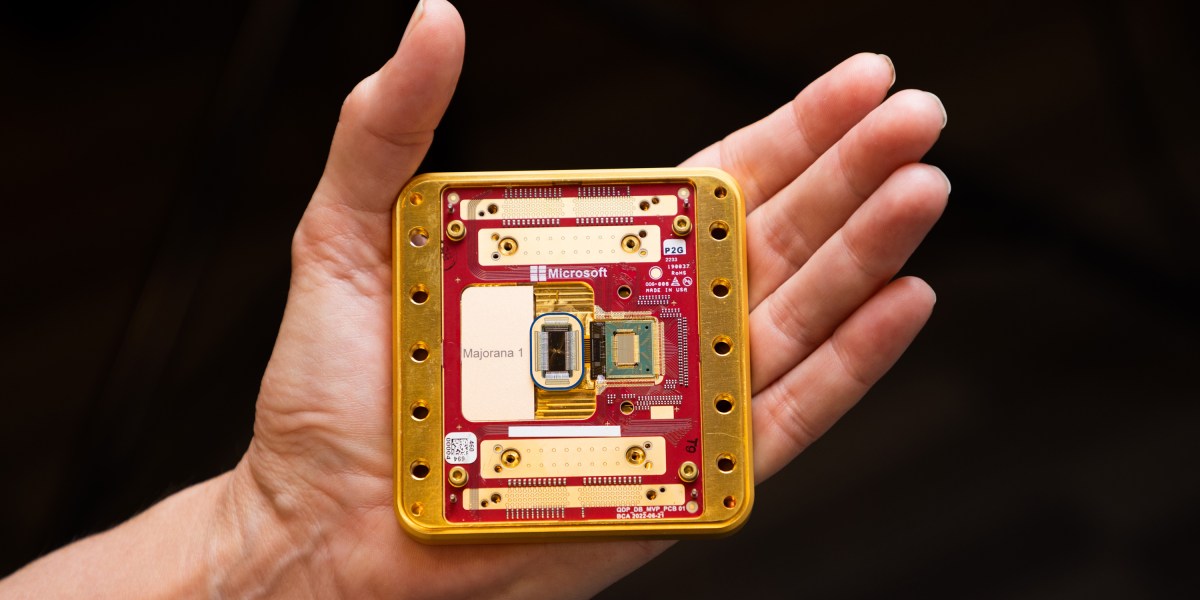For many years, theorists and experimentalists alike have been intrigued by the idea of creating topological qubits, which are constructed through mathematical twists and turns and have protection from errors essentially baked into their physics. “It’s been such an appealing idea to people since the early 2000s,” says Aaronson. “The only problem with it is that it requires, in a sense, creating a new state of matter that’s never been seen in nature.”
Microsoft has been on a quest to synthesize this state, called a Majorana fermion, in the form of quasiparticles. The Majorana was first proposed nearly 90 years ago as a particle that is its own antiparticle, which means two Majoranas will annihilate when they encounter one another. With the right conditions and physical setup, the company has been hoping to get behavior matching that of the Majorana fermion within materials.
In the last few years, Microsoft’s approach has centered on creating a very thin wire or “nanowire” from indium arsenide, a semiconductor. This material is placed in close proximity to aluminum, which becomes a superconductor close to absolute zero, and can be used to create superconductivity in the nanowire.
Ordinarily you’re not likely to find any unpaired electrons skittering about in a superconductor—electrons like to pair up. But under the right conditions in the nanowire, it’s theoretically possible for an electron to hide itself, with each half hiding at either end of the wire. If these complex entities, called Majorana zero modes, can be coaxed into existence, they will be difficult to destroy, making them intrinsically stable.
”Now you can see the advantage,” says Sankar Das Sarma, a theoretical physicist at the University of Maryland, College Park, who did early work on this concept. “You cannot destroy a half electron, right? If you try to destroy a half electron, that means only a half electron is left. That’s not allowed.”
In 2023, the Microsoft team published a paper in the journal Physical Review B claiming that this system had passed a specific protocol designed to assess the presence of Majorana zero modes. This week in Nature, the researchers reported that they can “read out” the information in these nanowires—specifically, whether there are Majorana zero modes hiding at the wires’ ends. If there are, that means the wire has an extra, unpaired electron.
“What we did in the Nature paper is we showed how to measure the even or oddness,” says Nayak. “To be able to tell whether there’s 10 million or 10 million and one electrons in one of these wires.” That’s an important step by itself, because the company aims to use those two states—an even or odd number of electrons in the nanowire—as the 0s and 1s in its qubits.
If these quasiparticles exist, it should be possible to “braid” the four Majorana zero modes in a pair of nanowires around one another by making specific measurements in a specific order. The result would be a qubit with a mix of these two states, even and odd. Nayak says the team has done just that, creating a two-level quantum system, and that it is currently working on a paper on the results.
24World Media does not take any responsibility of the information you see on this page. The content this page contains is from independent third-party content provider. If you have any concerns regarding the content, please free to write us here: contact@24worldmedia.com


